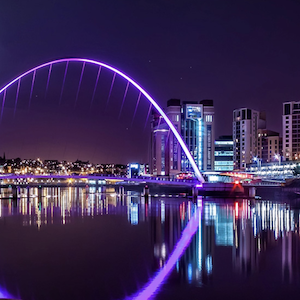[Anti]Lush: The Modest Modernists
By Jo Phillips
Sleek, abstracted, and angular – Modernist architecture is easy to spot. Often referred to as the language of design, modernist architecture places an emphasis on form over ornament and structure over materials to provide creative and efficient uses of space. The modernist movement emerged during the early 20th century following radical changes in technology.
There are multiple schools of thought when it comes to understanding the development of modernism, some observe it as a social and political movement, or as a response driven by technological developments, whereas others regard Modernism as a reaction against the lavish excesses of the architecture in the 19th Century. Modernism understood as being heavily influenced by Bauhaus, a German architectural school founded in 1919 by Walter Gropius which focused on workmanship and the merging of art and technology.
Austrian architects Adolf Loos and Otto Wagner are often seen as the trailblazers for the Modernist movement in architecture during the early 19th Century. Loos strongly believed that architecture should rid itself of all unnecessary ornamentation, making simplicity at the heart of Modernist design. In, Rebel Modernists, Liane Lefaivre presents a comprehensive study of Viennese architecture from 1890 to the present day. Since Loos and Wagner, Vienna has seen an eruption of buildings which has resulted in a present-day city which is one of the most liveable architectural and urban environments in the world.
 Photo Credit: Lund Humphires
Photo Credit: Lund Humphires
Modernism became a widespread architectural movement around Europe quickly before becoming an international phenomenon. We decided to look at a few of the top Modernist buildings from around the world to celebrate such an incredible architectural phenomenon.
The Stahl House, Los Angeles, California, USA, 1959
Sunshine permeated the desire for Modernist architecture amongst advocates for healthy living. With the lure of roof gardens, large windows, and open-air spaces where better to build such houses than the sunshine state of California?
The iconic Stahl House is located within the luscious surroundings of the Hollywood hills, is perched high above the hustle and bustle of Sunset Boulevard. The initial design of the Stahl House did not originate from architect Pierre Koenig but rather his clients, Buck and Carlotta Stahl and was built as part of the Case Study House program (experiments in American residential architecture to design and build inexpensive homes for the US residential housing boom).
Arguably one of the most famous houses in Los Angeles, The Stahl House has appeared newspaper and magazine articles, a vast amount of films, TV shows and music videos. And we can see why… Elegantly simple in its design, the house is glass on three sides with a cantilevered living room that extended 10 feet over the hill which ensures breath-taking views over the city of angels. Just by looking at the picture of this modern glass house, we are provided with a sense of living in a different era as the beautiful geometric lines blend together to create a sensational structure and a classic modernist gem.

Photograph of The Stahl House, Los Angeles, California
© mbtrama
Image size changed to pixels: 700 width and height 479
Source
Villa Savoye, Poissy, France, 1929
A vital building in the early development of Modernism, it is one of the only houses in France to have been declared a national monument during the architect’s lifetime; Villa Savoye. Designed by renowned Swiss-French architect Le Corbusier, the villa gracefully melds form and function together whilst creating the perfect Modernist mecca.
Le Corbusier designed the villa in accordance with his five points of architecture; pilotis to lift the building above the ground, a flat roof which served as a terrace garden, open-plan interiors, ribbon windows for light and ventilation, and a free facade independent of the load-bearing structure. The villa represents Le Corbusier’s unveiling virtuosity, where his intense fascination for form fuses with the splendour of clean simplicity.

Photograph of Villa Savoye, Poissy, France
© m-louis
Image size changed to pixels: 700 width and height 465
Source
St Catherine’s College, Oxford University, Oxford, UK, 1962
Oxford University instantly conjures up visions of centuries-old campus architecture, and rightly so. However, amongst the scattered campuses all around the city of Oxford lies a modernist architectural delight…St. Catherine’s College.
Designed by the acclaimed Danish architect Arne Jacobsen, St. Catherine’s College easily distinguishes itself from the rest. The consistent use of modernist forms, an integrated landscape, and unique interiors easily makes this one of the greatest modernist buildings in the UK. Aside from the design of the college, Jacobsen also designed everything inside the buildings, from the famous high-back “Oxford chairs” to cutlery, clocks, and furniture.

Photograph of St. Catherine’s College, Oxford, UK
© Steve Cadman
Image size changed to pixels: 700 width and height 390
Source
Rietveld Schröder House, Utrecht, The Netherlands, 1924
Designed by Gerrit Rietveld, the Rietveld Schröder house was built as a three-dimensional and asymmetrical composition. It is characterized by visually striking yet seamless transitions between the building’s exterior and interior.
Rietveld believed that buildings should ‘express the fundamental essence’ of the space they define, rather than act as a mere overcoat for a succession of rooms. What instantly makes Rietveld an icon of the early modernist movement, is his use of primary colours and the lively, clever division of surfaces. Over 90 years on and the house still attains its original playful expression of human creativity.

Photograph of Rietveld Schröder House
© frm_tokyo
Image size changed to pixels: 700 width and height 438
Source
Modernist buildings have had a cult following over the years but have also attract divided opinions due to their daring and unique designs. Not only do modernist buildings have an incredible durability which gives them a contemporary appearance, but they are also fascinating to look at.
Rebel Modernists is published by Lund Humphries and is available to purchase now





